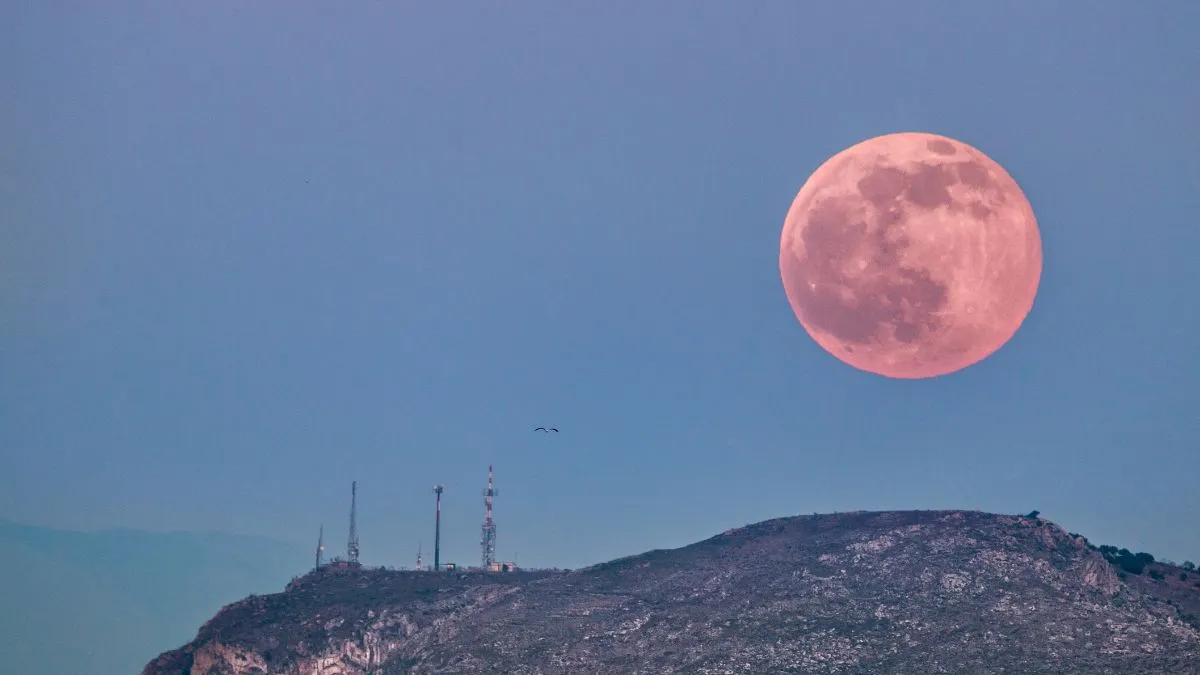- By Shivangi Sharma
- Fri, 11 Apr 2025 06:53 PM (IST)
- Source:JND
April Pink Moon 2025: Skywatchers, get ready! On Saturday, April 12, 2025, a full moon known as the "Pink Moon" will light up the night sky — and it’s bringing a twist. Despite its name, this moon won’t actually appear pink. What makes it unique this year is that it also qualifies as a “micromoon,” the smallest full moon of 2025.
A micromoon occurs when the Moon reaches its apogee, or the farthest point from Earth in its elliptical orbit. This makes the Moon appear slightly smaller and dimmer than usual, up to 14 per cent smaller and 30 per cent dimmer than a supermoon, according to NASA. The distance during this event will be approximately 251,000 miles from Earth.
While the visual difference may be subtle to the naked eye, side-by-side comparisons clearly show the micromoon’s reduced size. The full moon will reach its peak illumination at 5:52 am IST, and it will be visible throughout the night.
Why Is It Called the Pink Moon?
The name “Pink Moon” doesn’t come from its color. Instead, it refers to early spring wildflowers, especially moss pink or creeping phlox, which bloom around this time of year. The name has Native American origins and marks the first full moon of spring in the Northern Hemisphere. In Christian tradition, this full moon is also referred to as the Paschal Moon, which helps determine the date of Easter Sunday.
This month is packed with lunar excitement. After the micromoon, skywatchers can look forward to a rare “moon-smile” later in April and three supermoons expected in October, November, and December 2025. Another micromoon is also on the calendar for May.
Moon Illusion
Ever noticed the Moon looking bigger near the horizon? It’s called the Moon illusion — a visual trick our brains play. When the Moon is low in the sky, near buildings or trees, it seems larger. But if you hold up your index finger, you’ll see that it remains the same size regardless of its position in the sky.
